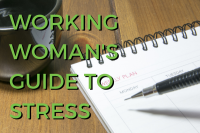Body language is at work in all aspects of our lives. Unspoken communication can say as much as the words that come out of our mouths. In the workplace, it’s especially important to understand how body language operates and the things we may unwittingly be communicating.
Women particularly find it hard to stamp their authority in the workplace sometimes. Whilst strides are being made towards equality, women still have a harder time being taken seriously than men in a world historically dominated by male leaders. We can be dismissed as weak or flirtatious and not given adequate respect.
Understanding the importance of body language in the workplace can help counteract some of the challenges we regularly face. Here are a few useful body language facts that could serve you well at your next meeting or client appointment.
Social or Direct Gaze
Where we look when talking to someone can give off certain signals. Our social gaze focuses on the nose and mouth. It indicates to another person that this a more relaxed, social situation. For women, using a social gaze can sometimes be misinterpreted as flirtatiousness. In contrast, a direct gaze, one where you focus on a person’s eyes and nose, shows you mean business. You may find that a social gaze is more appropriate to some situations. But always have the direct gaze at the ready if you really want to make your point and authority felt.
Head Position
Head tilting can indicate one person’s intent listening to another. It shows you’re interested and involved. However, the head tilt is a particularly feminine form of body language and can sometimes be seen as submissive. Avoid coming across as compliant by keeping your head and neck in a straight, in-line position. It gives a much stronger signal to any men you may be dealing with.
Physical Space
Power and confidence can be signalled by how much space you take up in a room. Men famously “man-spread” to communicate their authority in any given situation. But women can also imitate this show of status by spreading out their belongings in a meeting. Claim your space at the table and make your presence known. The same goes for your gestures. Gesticulate with your whole arms rather than just your forearms. If your arms are resting on a table, spread your elbows to increase the space you occupy.
Posture
Both your standing and seated posture can communicate a lot to other people in the room. When standing, women tend to shift their weight from one hip to another. This makes us look imbalanced and less dominant. Try to maintain balance throughout your body when you’re standing. When sat down, put both feet on the floor and don’t slouch. This will help to make you look stable and in control.
Facial Expressions
Women are at an advantage in the workplace in some regards. We are much better at reading facial expressions than men. However, our own facial expression can sometimes work against us. Women tend to smile more often than men. Whilst this can be great for creating convivial social situations, it can sometimes make us seem less serious in the workplace. Develop a neutral facial expression and you could be taken much more seriously.
It’s disappointing that women have to adapt their body language to make their way in the workplace. Maybe one day, workplaces will be completely equal and women won’t have to imitate men in order to get ahead. In the meantime, keep these body language tips in mind to make sure you and your career reach the heights you deserve.
 Abby Vonda works at Datastical.com.
Abby Vonda works at Datastical.com.
She specializes in entrepreneurship and self-improvement topics.
She is very passionate about productivity, personal and career development, as well as business and leadership.









Leave A Comment